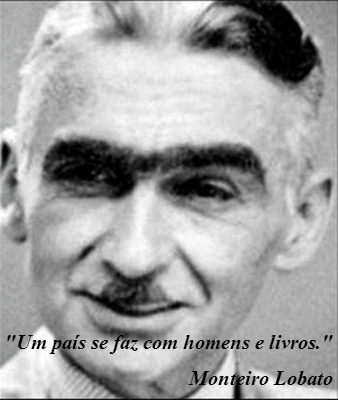Everything comes from dreams. First we dream, then we do.
The sentence above, said by Monteiro Lobato, one of the greatest writers of Brazilian Literature, says a lot about the author. Monteiro Lobato's dreams led him to be the forerunner of Brazilian children's literature, opening paths for new authors who dedicated themselves to the children's universe inspired by the interesting and controversial figure of Lobato, who, in addition to writing stories for children, was a short story writer, essayist and translator, as well as a great social critic and political.
Monteiro Lobato Biography
José Bento Renato Monteiro Lobato, or just Monteiro Lobato, as he became known, was born in Taubaté, a city in the interior of the state of São Paulo, on April 18, 1882. He graduated in Law, but after a short time in the profession, he went to take care of his farms, inherited from his grandfather, a very rich and influential man in the region in the 19th century. Thanks to his comfortable financial condition, Lobato was able to dedicate himself almost exclusively to the writing profession, having started his career with the publication of his short stories in newspapers and magazines. These stories later formed what is considered the author's masterpiece, the book Urupese.

“A country is made with men and books”: This was the ideal of Monteiro Lobato, an important writer of the 20th century
But let's talk about children's literature: Monteiro Lobato, whose birth date was chosen to celebrate the National Children's Book Day, was one of the forerunners of literature made exclusively for children and adolescents. At that time, the beginning of the 20th century, children were not seen as potential readers and, therefore, they read inappropriate books for their age, which generated immense demotivation in the little ones. He was the creator of the famous Sítio do Picapau Amarelo, whose characters fill the children's imagination and are recurrent in more than twenty titles in the series. Who has never heard of the Emilia doll, the girl Narizinho and her cousin Pedrinho? Not to mention the family's grandmother, Dona Benta, Tia Nastácia — a very good cook —, among other residents of the famous farm created by Lobato.

Sítio do Picapau Amarelo and its residents are well known to the Brazilian public
Monteiro Lobato left a great contribution to Brazilian Literature. He was an important man for national letters and also a historical character, having been involved in several political episodes, collecting admirers and disagreements, the most famous of them with the then President of Republic, Getulio Vargas. Unfortunately, he died poor and ill on July 4, 1948, aged 66, from a stroke. If you're curious and want to know a little more about Monteiro Lobato's life and work, there's nothing better than know his books, that's why Escola Kids selected some titles for you to have a meeting with this writer brilliant. Good reading!
Sítio do Picapau Amarelo Collection
1921 - the Saci
1922 - fables
1927 - The Adventures of Hans Staden
1930 - Peter Pan
1931 - Reigns of Little Nose
1932 - trip to heaven
1933 - Pedrinho's Hunts
1933 - World Story for Kids
1934 - Emilia in the country of grammar
1935 - Emilia's arithmetic
1935 - Dona Benta Geography
1935 - history of inventions
1936 - Children's Don Quixote
1936 - Emilia's Memories
1937 - Dona Benta's evenings
1937 - Viscount's Well
1937 - Aunt Nastasya's Stories
1939 - The Yellow Woodpecker
1939 - the minotaur
1941 - The reform of nature
1942 - the size key
1944 - The Twelve Works of Hercules (two volumes)
1947 - Different stories.
other children's books
1920 - the little girl with the upturned nose
1921 - Narizinho's Fables
1921 - upturned little nose (included in Reigns of Little Nose)
1922 - The Marquis of Rabico (included in Reigns of Little Nose)
1924 - the jaguar hunt
1924 - Jeca Armadillo
1924 - Narizinho's engagement (included in Reigns of Little Nose, with the name of Narizinho's wedding)
1928 - prince's adventures (included in Reigns of Little Nose)
1928 - the cat felix (included in Reigns of Little Nose)
1928 - the owl face (included in Reigns of Little Nose)
1929 - Pinocchio's brother (included in Reigns of Little Nose)
1929 - the scoop circus (included in "Reinações de Narizinho, with the name the horse circus)
1930 - the parrot feather (included in Reigns of Little Nose)
1931 - The Pixie Powder (included in Reigns of Little Nose)
1933 - Narizinho's new reigns
1938 - Emilia's museum (play included in the book diverse stories).
By Luana Castro
Graduated in Letters

